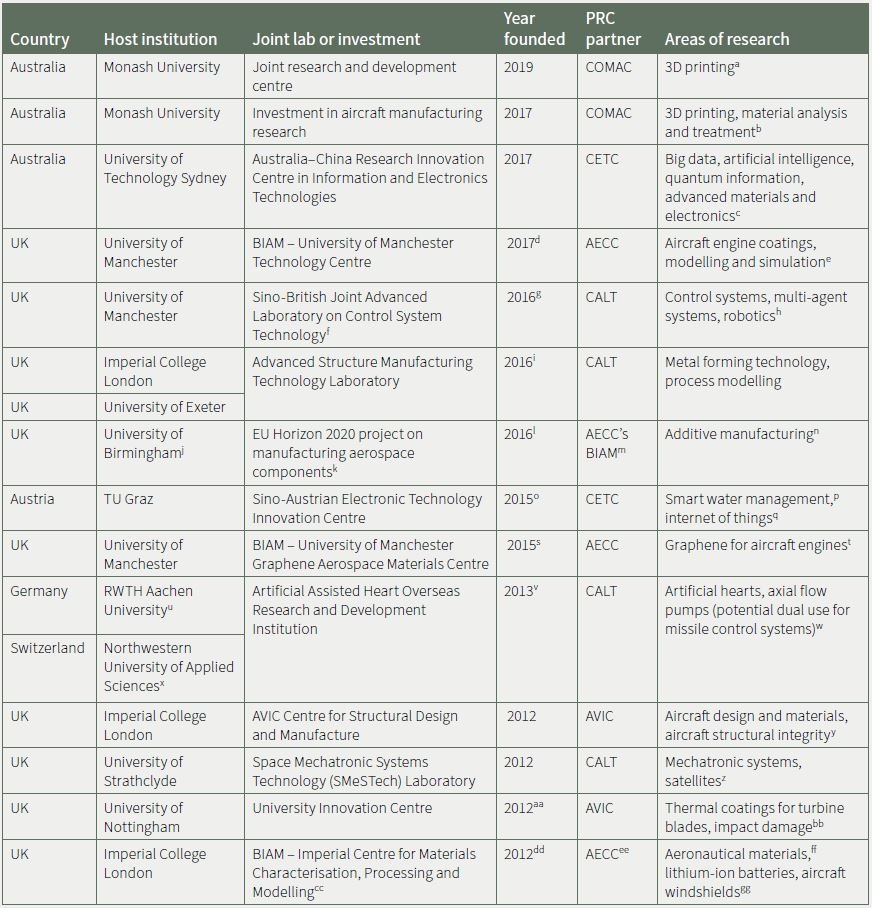Last night @ASPI_org launched the China Defence Universities Tracker. Led by @alexjoske, the Tracker was produced by a team of analysts including Audrey Fritz, @EBKania, and @He_Shumei as well as fact-checked by @emily_sw1 and others. (Thread) https://unitracker.aspi.org.au/ ">https://unitracker.aspi.org.au/">...
First, it& #39;s worth reiterating the scale of this project. In total, we completed entries on nearly 100 civilian universities, 50 institutions subordinate to the PLA, three associated with the MSS, four with the MPS and 12 Chinese arms manufactures. https://unitracker.aspi.org.au/about/ ">https://unitracker.aspi.org.au/about/&qu...
That means over 48,000 words need to be written, re-written, fact-checked, formatted and fact-checked again. Given that the vast majority of this work was based almost exclusively with Chinese-language source-material, you can imagine the amount of work that went into this.
Most of my time was devoted to producing the entries for China& #39;s defence industry conglomerates (军工集团) and the universities directly subordinate to the PLA. I& #39;ll highlight a few of the interesting things I came across during this research.
First to the PLA universities. Some of these universities focus on training soldiers, sailors or air force personnel in doctrine, tactics or other professional military skills. Yet, others also engage in significant amounts of defence research and/or have records of misconduct.
Universities that tend to produce large amounts of defence research are known as the PLA& #39;s & #39;five comprehensive universities& #39;.
These include: Air Force Engineering University, National University of Defence Technology, Naval University of Engineering, Information Engineering University, and Army Engineering University.
Given their strong records defence research and the likelihood of engaging in espionage or other misconduct, they are all designated & #39;very high risk& #39; by the Tracker. A good example of why can be found in our entry for the AFEU: https://unitracker.aspi.org.au/universities/air-force-engineering-university/">https://unitracker.aspi.org.au/universit...
Let& #39;s now move on to China& #39;s defence industry conglomerates. To put it bluntly, these are arms manufactures. Collaboration with any of these organisations should be treated with an extreme amount of caution, which is why the Tracker has again designated them as & #39;very high risk& #39;.
Despite the risk, China& #39;s defence industry conglomerates are on a & #39;long march& #39; to markets the world over. Take a look at this table @alexjoske and I created documenting all joint laboratories China& #39;s defence industry conglomerates have with foreign institutions.
Notice anything? The China Academy of Launch Vehicle Technology, which produces missile technology for the PLA-RF, has four joint labs with leading universities in the United Kingdom. Read @hannahdev& #39;s story on it here for @guardian: https://www.theguardian.com/education/2019/nov/25/uk-academias-links-to-chinese-defence-firms-harmful-for-national-security">https://www.theguardian.com/education...
If you want deeper analysis, check out pages 15-20 of the Tracker& #39;s accompanying report where you& #39;ll find lots of other fascinating insights about collaborations between overseas institutions and defence industry conglomerates like AVIC, COMAC, and AECC. https://www.aspi.org.au/report/china-defence-universities-tracker">https://www.aspi.org.au/report/ch...
Wait... did you say COMAC was a defence industry conglomerate? Well, according to the PRC& #39;s own criteria, it is. Check out COMAC& #39;s entry in the Tracker to see how the CCP& #39;s military-civil fusion program is drawing together civilian and defence industries. https://unitracker.aspi.org.au/universities/commercial-aircraft-corporation-of-china/">https://unitracker.aspi.org.au/universit...
That& #39;s all for today, but for one last point. Military-civil fusion is heightening the risk of research collaboration with Chinese entities being mis-appropriated to benefit the PLA. The Tracker is designed to help universities around the world better assess this risk. (End)

 Read on Twitter
Read on Twitter


